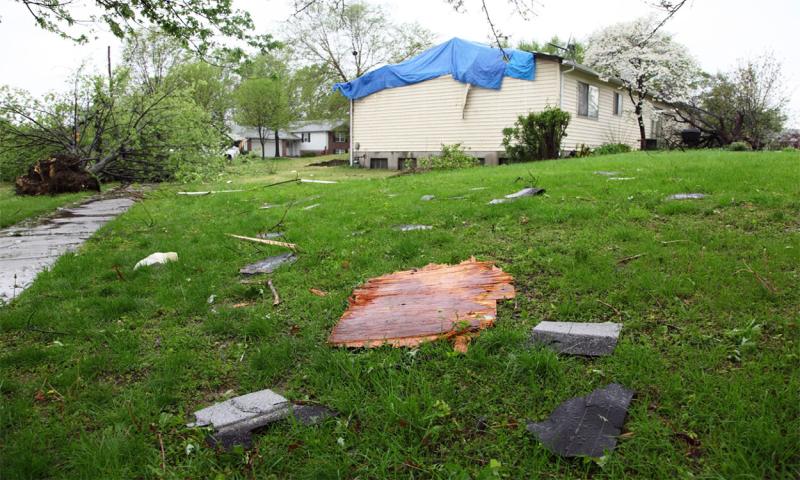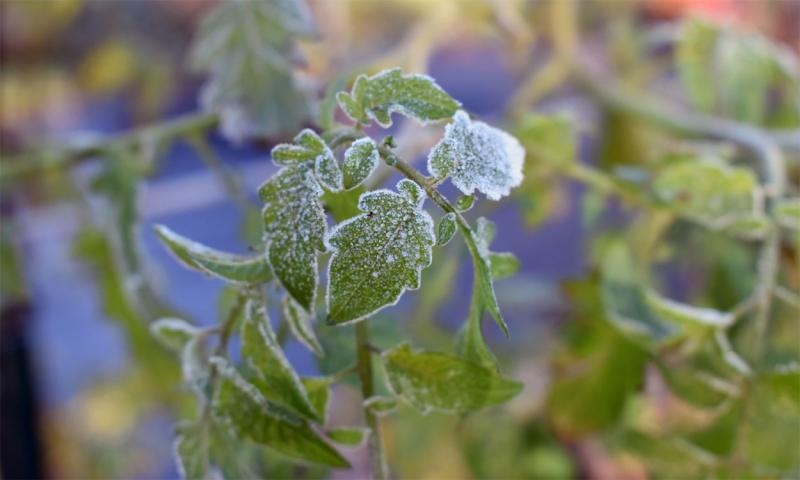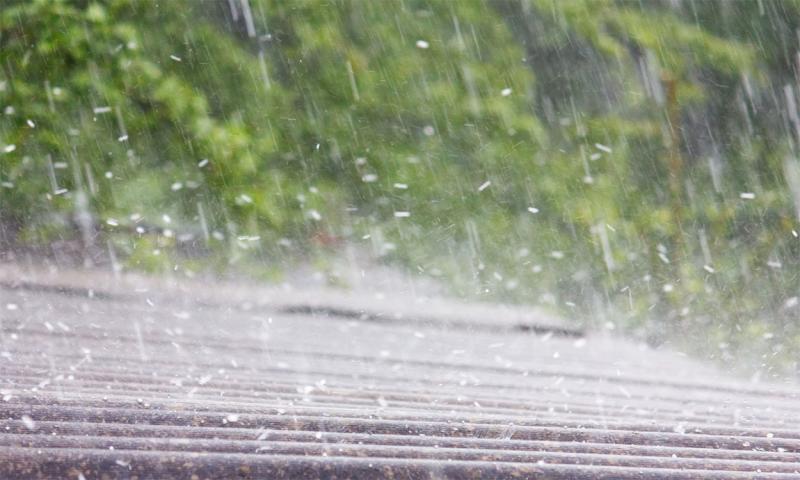Written by Cindy Schnabel, South Dakota State University (SDSU) Extension Horticulture Assistant and Master Gardener, under the review and direction of Kristine Lang, SDSU Assistant Professor and Consumer Horticulture Extension Specialist.
If you have been in South Dakota long, you come to realize that weather plays a part in everything that you do. You wake and check the weather to know what to wear, to decide if you should turn on heat or air conditioning and to determine when and what can you plant. But wait, there is more! Weather can damage plants. This year in May, South Dakotans have experienced hail, tornadoes, a derecho and a very late frost and freeze. With these damaging weather conditions, what is a gardener supposed to do? Controlling the weather is out of the question, but dealing with the aftermath and restoring your garden is possible.
High Winds, Tornadoes, Derechos and Straight-line Winds

Damage from wind will depend on the force, direction and persistence of the wind. Damage to vegetation will occur when wind speeds are above 30 miles per hour. Strong, gusty winds can cause shredded leaves, tear off flowers, break branches and uproot plants.
You should promptly prune plants that have torn leaves and broken stems. This will help prevent disease from entering at those ragged breaks. It will also help the plant begin to reestablish itself. Snip below the damaged area and remove damaged leaves by pinching them off. Do this as soon as possible to allow the plant to recover quickly and completely. This could take approximately six weeks. You may not see full recovery in perennial plants until the following growing season.
If smaller garden plants have been uprooted, check to see whether the plant is dying and should be discarded. If the plant still shows signs of life, you can replant. You may need to re-dig the planting hole, place the damaged plant back, then firmly pack the soil around the plant. Water thoroughly to settle the soil around the replanted area.
For advice on dealing with trees and shrubs after storms, look to the Tree Pest Alert for timely tips.
Frost and Freeze

If you missed covering your plants because the late-May freezing temperatures caught you off guard, there are things you can do to mitigate the damage. First, damage from frost/freeze might not show fully for a couple of weeks. Signs of damage will occur on tender new growth first. The plant will wilt, turn brown or black and eventually become crispy. This means the affected parts of the plant are dead. It is tempting to remove the unsightly foliage, but wait until the full extent of the damage is apparent. Remaining foliage may protect the plant in the event there is a follow-up freeze event.
After waiting for damage to show, prune the dead stems back all the way. If some of the stem is live, cut only the damaged areas. They should regrow once the warm weather reappears. Soft stem plants that have suffered cold damage should be immediately pruned to prevent rotting. Once you have done damage control, water the plant. When it looks like the plant is going to survive, provide fertilizer to aid in the recovery.
If all foliage and stems are showing excessive browning and even blackening and rotting, you’ll want to remove the damaged plants and add new plants back into the garden.
Hail

Hail damage can vary, depending on the size of those ice pellets coming down. Hail can perforate and shred foliage, knock off blossoms and completely destroy an entire plant. Start by removing broken stems and leaves and any damaged fruit. If the plant is shortened and still has some leaves, it may be salvageable. Such plants need tender loving care. Water regularly, not excessively, mulch and watch for problems. Do not fertilize until plants have recovered. New growth will just stress the plants.
Downpour
Gardeners love rain, but there are times when a downpour brings too much precipitation. Heavy rains can damage plants physically and too much rain and warm summer temperatures make conditions right for bacterial and fungal problems. Watch for spots or other discoloring on foliage, rotting or wilting of stems, fruit and even the whole plant, and powdery mildew on plants. To help dry out the soil, pull back or remove the mulch from around the plants for a few weeks. Do not walk on the muddy, wet soil near your plants to avoid compacting the soil. Check your container plants. Downpours or excess water will increase the chances of root rot. Empty the containers so they do not sit in water. Check the roots of vegetables and plants to make sure they are still firmly planted in the soil. Replant or cover with soil so that the roots do not dry out.
We know that weather is unpredictable, and every gardener will eventually have to deal with damage caused by weather. These tips will help you give your plants a fighting chance.
Special thanks to SDSU Extension Master Gardeners Tim Schreiner and Stacy Dreis for serving as volunteer copyeditors of this article.


